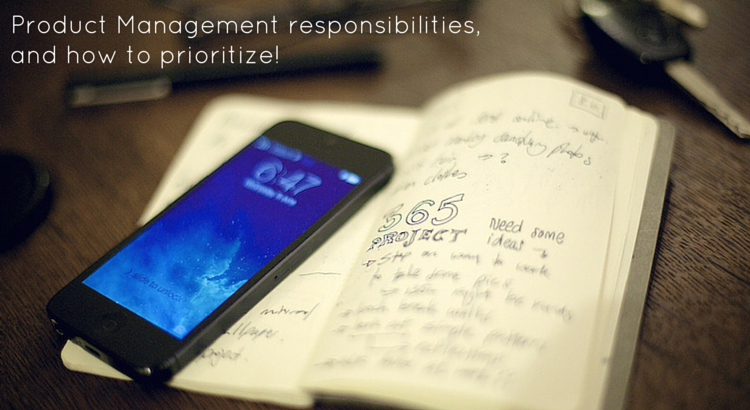Product managers are involved in all aspects of the product life cycle, from the first idea to retiring the product. Perhaps obvious, but failing to prioritize and delegate responsibility leads to constant fire fighting and lack of focus. Agreeing that the primary goal of the product manager is to identify and exploit a product-market fit as discussed in “what does a product manager do?” is a good first step. But beyond this, what are the key product management responsibilities and how do these help you decide what tasks to prioritize?
Seven Habits – Production capacity and product management responsibilities
In the incredibly famous self-help book “The Seven Habits of Highly Effective People” (Stephen R. Covey) the concept of “production capacity” is introduced, drawing parallells to the production industry. Stephen talks about balancing production (output) and investment in production capacity, and about maintaining and taking care of your assets. In the book he stress the importance of not simply milking your existing assets, but also investing to ensure long term success.
Applying Stephen’s advice to product management and product companies makes a lot of sense. In a product company one of the key challenges is how to balance between customer requirements on existing products and investing in the future. Future products will not provide short term revenue, but not spending time on the future is a sure way of ending up with offerings that are outdated and far behind competition.
So what does this mean for the product manager? If it’s important for the product company to balance investments between existing and future products, it comes down to the product manager to strike that balance. In most companies there’s a natural focus on existing products, as these are paying the bills. So where the product manager really need to focus is on future products, as typically no one else does.
Not spending time on the future is sure to make your offerings outdated and behind competition! Click To TweetWhat not to do!
But prioritizing is not only about knowing what to do, it is equally important to decide what not to do. One activity that tends to take as much time as you let it is sales and sales support. As a product manger it’s important to remember that you are not an account manager or sales rep. It’s always hard to say no when a revenue generating opportunity is on the line, but you should not spend time on individual opportunities unless you do so to test out newly developed value propositions. The sales organization should be capable of developing business and handling ongoing opportunities them selves. And if they are not, then hi-jacking the product manager and using him or her as an account manager is not the solution.
A product manager should definitely interact with individual customers, but this should be done primarily to gather market and user insight. It is crucial to distinguish between customer activities where the objective is to sell a product, and where the objective is to gather input. Besides having different objectives, these activities require different discussions, meeting agendas and attendees.
If you also wear the product marketing hat focus on work that supports multiple customers, not one. That is enabling business tomorrow. Engage with individual customers with the primary objective to develop and test your value propositions and material.
The silver bullet?
So while there’s no silver bullet when prioritizing between multiple tasks and the expectations of many, let the following guide your decision:
1) Focus on finding and exploring the product-market fit.
2) Prioritize future products, functions and sales supporting material – others don’t.
3) Find time to do this by not doing the work of others – if you meet individual customers remember your primary objectives.

